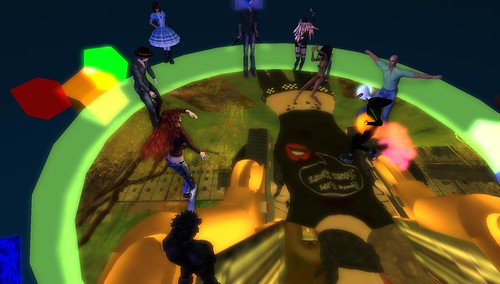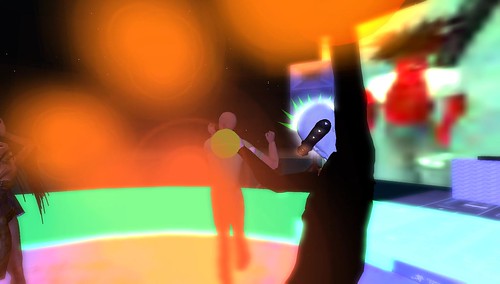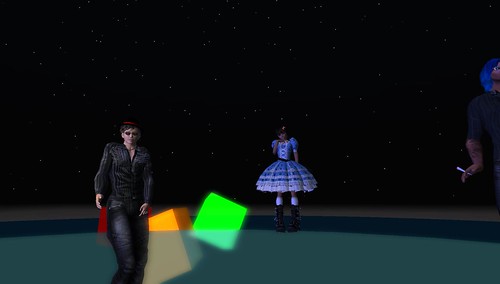
THE 14 has been determined.
Now, the odds are already beginning to be laid down for each competing tune in the 24th Anugerah Juara Lagu (AJL) which will be held early next year.
Undoubtedly leading the list for the deserving of honours are the younger talents who have been responsible for the fresh sounds which have set the motion for one of the more relevant AJL finals in the history of the competition.
Aizat leads the field with his self-composed Kau Aku, and also is a favourite tune for the night’s top honours with Pete Teo and Amran Omar’s Pergi from the soundtrack of the late Yasmin Ahmad’s Talentime.
Then there are the all-too deserving singer-songwriter combos in Yuna for Dan Sebenarnya, Aku Skandal by Hujan, Situasi by Bunkface as well as Aurora by Estranged.
Dare we forget Bencinta which was co-written by original performer Faizal Tahir with Audi Mok which is another hot fave to win the competition – if it doesn’t have points taken off should Shila be performing
in his place come the night of AJL.
Then there are the run-of-the-mill pop staples like Tak Mungkin Kerna Sayang, Pakai Buang, Rindu Terhenti
and Adam Dan Hawa. While these tunes may not exactly rock the boat, there are little blessings tagged with each such as Alyah’s green but able performance; Stacy’s electrifying showmanship;
Tomok’s ability to sing without doing it through his nose anymore and Misha Omar’s diva-esque vocal powerhouse showcase.
Interesting ditties like Bengang and Masih Jelas should be interestingly delivered by Akim and Hafiz.
Completing the list is Aku Rindu Sayang Kamu, the inclusion of which no one can comprehend in the first place.
Whether agreeable or not BE prepared to cringe. With the recent health situation faced by ‘Superman’ Faizal Tahir (he’s down with lung infection), Muzik-Muzik followers had Shila to deal with in delivering the beautiful tune of Bencinta during the third semi-finals of the Muzik-Muzik qualifiers.
And while many may have had their ears bleed to the senseless yelping from Shila, endless applause
greeted the qualification of the song by Audi Mok with lyrics by Faizal Tahir himself.
Now the question remains. Just who will perform the song in the finals?
Well, fans of the song, as well as Faizal, should now go into overdrive in praying that the Superman
gets well in time for the 24th Anugerah Juara Lagu (AJL).
According to Primeworks Studio entertainment production manager Fadzliniza Zakaria, the option was open for Faizal to make a return to the stage to perform the song in the finals.
“As in the case of the 22nd Anugerah Juara lagu where Kaer Azami had a replacement in Sahri to perform Izinku Pergi, we are open to the option.”
According to Fadzliniza, a replacement for Faizal at the semi-finals was inevitable.
“It was a situation that we couldn’t avoid and Shila was given the duty to deliver the song.
“At the moment, we have no rules or regulations governing such a scenario but we judge such scenarios on a case-to-case basis — and Faizal is welcome to, if he is able to.”
Shila meanwhile, after the song qualified for the AJL, basked in the glory of the tune’s qualification.
That is until she was put to task for virtually destroying the tune with every imaginable foul-up possible.
“Well, I would do my best if I was given the chance to perform on the AJL stage.
“Before tonight (Friday), even Faizal himself called me saying whatever the result, there is no pressure and that he would always support me.”
And despite the brickbats, Shila insisted that she was proud of her performance as it was her “best”.
“I did my best,” she said indignantly.
“I can’t please everyone and I will do better if given the chance.
“It’s not fair to compare Faizal and I, and I can never be like him. I realise I have to do better.”
Shila said her appointment to perform the tune was a shocker, but she was thankful for the support of both her fans and Faizal’s.
IT’S a confusing time for the music industry.
While the list of finalists for the 24th Anugerah Juara Lagu (AJL) offered a mixed bag with a variety of offerings onstage – there were murmurs that production may have had a hand in the results.
Primework Studios Sdn Bhd content and industry development general manager and head jury Azhar Borhan brushed off any doubts and insisted the results were nothing but a happy coincidence.
“Every year we have a complicated task, and this year is no less simpler.
“As of previous years, it is hard to consider what is good and not, but we have good balance.”
Azhar pointed out that the points were based on the evaluation of the tunes during pre-judging.
“This is further reinforced by the live shows where we can see just how impactful the tunes are delivered live.”
Although, again, it is undeniable that the choices make for good TV, despite some ‘weaker’ tunes making the final cut for the AJL stage.
Debates are, however, expected, as the competition has rarely — if ever — been without controversy.
“You could even say, that the results have a negative impact on ethnic songs,” said Azhar.
“The truth is, there is a lack of such songs in the market, and we did the evaluation based on what is available.”
He shrugged off the judging system, which placed him, apart from four appointed judges, to decide on what is supposedly the best in terms of body of work for the music industry.
“Questions of abuse when it comes to personal interest and such – our hands are tied as the process of selecting the right people to judge disqualifies so many people.
“At the end of the day, it’s probably not the best of the lot, but it’s what’s available.”
Indeed, the judging system of non-category Muzik-Muzik qualifiers has come under fire, as some songs may have slipped through the cracks of the vetting process.
In its 24th year, Azhar insisted that the competition was still being ‘tweaked’ for the best process.
“We can take into consideration outside voices, but we want to hear suggestions for a more effective method of judging.”
Perhaps the finals will be more promising in terms of selection criteria with a panel of nine to determine the eventual winner.
Primeworks entertainment production manager Fadzliniza Zakaria said there would be no change in the judging process for AJL.
“We will have a total of nine judges. Three to evaluate composition, three for lyrics, and three for best performance and all involved will decide on best vocals.”
The slightly more comprehensive judging system won’t undo the semi-finals but hopefully, it’ll have more ‘agreeable results’ to all.
Even the local ‘Grammys’ — the Anugerah Industri Muzik — is struggling with credibility. Its revamp of the two-tiered judging system is seen as a positive step, but not the be all and end all. So it’s back to the question of the chicken or the egg.
Do the songs have to get better, or does the judging process have to be rectified to recognise the deserving tunes first?
Whatever the answer, for the sake of the music industry, it has to be a win-win situation.
The industry still needs an event like AJL and the AJL, too, has to recognise that it needs good tunes for its survival.that these are the cream of the crop in terms of quality over the past year, the production of AJL should make for an interesting watch anyway – for whatever reason.
This is the line-up for the 24th Anugerah Juara Lagu:
• Aku Skandal/Hujan/Noh/Noh
• Tak Mungkin Kerna Sayang/Alyah/Ajai/Habsah Hassan
• Aurora/Estranged/Estraged/Estranged
• Bengang/Akim/Amir/Sheikh Qalam
• Aku Rindu Sayang Kamu/Black/Yuzai/Yuzai
• Dan Sebenarnya/Yuna/Yuna/Yuna
• Rindu Terhenti/Tomok/Aubrey Suwito/Tinta
• Pakai Buang/Stacy/Edry KRU/Edry KRU
• Kau Aku/Aizat/Aizat/Aizat/Aizat
• Pergi/Aizat/Pete Teo/Amran Omar
• Situasi/Bunkface/Sam/Sam
• Bencinta/Faizal Tahir/Audi Mok/Faizal Tahir
• Adam Dan Hawa/Misha Omar/Azmeer/Loloq
• Masih Jelas/Hafiz/Aidit Alfian Ad Samad
Faizal to be replaced?

BE prepared to cringe.
With the recent health situation faced by ‘Superman’ Faizal Tahir (he’s down with lung infection), Muzik-Muzik followers had Shila to deal with in delivering the beautiful tune of Bencinta during the third semi-finals of the Muzik-Muzik qualifiers.
And while many may have had their ears bleed to the senseless yelping from Shila, endless applause greeted the qualification of the song by Audi Mok with lyrics by Faizal Tahir himself.
Now the question remains. Just who will perform the song in the finals?
Well, fans of the song, as well as Faizal, should now go into overdrive in praying that the Superman gets well in time for the 24th Anugerah Juara Lagu (AJL).
According to Primeworks Studio entertainment production manager Fadzliniza Zakaria, the option was open for Faizal to make a return to the stage to perform the song in the finals.
“As in the case of the 22nd Anugerah Juara lagu where Kaer Azami had a replacement in Sahri to perform Izinku Pergi, we are open to the option.”
According to Fadzliniza, a replacement for Faizal at the semi-finals was inevitable.
“It was a situation that we couldn’t avoid and Shila was given the duty to deliver the song.
“At the moment, we have no rules or regulations governing such a scenario but we judge such scenarios on a case-to-case basis — and Faizal is welcome to, if he is able to.”
Shila meanwhile, after the song qualified for the AJL, basked in the glory of the tune’s qualification.
That is until she was put to task for virtually destroying the tune with every imaginable foul-up possible.
“Well, I would do my best if I was given the chance to perform on the AJL stage.
“Before tonight (Friday), even Faizal himself called me saying whatever the result, there is no pressure and that he would always support me.”
And despite the brickbats, Shila insisted that she was proud of her performance as it was her “best”.
“I did my best,” she said indignantly.
“I can’t please everyone and I will do better if given the chance.
“It’s not fair to compare Faizal and I, and I can never be like him. I realise I have to do better.”
Shila said her appointment to perform the tune was a shocker, but she was thankful for the support of both her fans and Faizal’s.
Judging juggling act
IT’S a confusing time for the music industry.
While the list of finalists for the 24th Anugerah Juara Lagu (AJL) offered a mixed bag with a variety of offerings onstage – there were murmurs that production may have had a hand in the results.
Primework Studios Sdn Bhd content and industry development general manager and head jury Azhar Borhan brushed off any doubts and insisted the results were nothing but a happy coincidence.
“Every year we have a complicated task, and this year is no less simpler.
“As of previous years, it is hard to consider what is good and not, but we have good balance.”
Azhar pointed out that the points were based on the evaluation of the tunes during pre-judging.
“This is further reinforced by the live shows where we can see just how impactful the tunes are delivered live.”
Although, again, it is undeniable that the choices make for good TV, despite some ‘weaker’ tunes making the final cut for the AJL stage.
Debates are, however, expected, as the competition has rarely — if ever — been without controversy.
“You could even say, that the results have a negative impact on ethnic songs,” said Azhar.
“The truth is, there is a lack of such songs in the market, and we did the evaluation based on what is available.”
He shrugged off the judging system, which placed him, apart from four appointed judges, to decide on what is supposedly the best in terms of body of work for the music industry.
“Questions of abuse when it comes to personal interest and such – our hands are tied as the process of selecting the right people to judge disqualifies so many people.
“At the end of the day, it’s probably not the best of the lot, but it’s what’s available.”
Indeed, the judging system of non-category Muzik-Muzik qualifiers has come under fire, as some songs may have slipped through the cracks of the vetting process.
In its 24th year, Azhar insisted that the competition was still being ‘tweaked’ for the best process.
“We can take into consideration outside voices, but we want to hear suggestions for a more effective method of judging.”
Perhaps the finals will be more promising in terms of selection criteria with a panel of nine to determine the eventual winner.
Primeworks entertainment production manager Fadzliniza Zakaria said there would be no change in the judging process for AJL.
“We will have a total of nine judges. Three to evaluate composition, three for lyrics, and three for best performance and all involved will decide on best vocals.” The slightly more comprehensive
judging system won’t undo the semi-finals but hopefully, it’ll have more ‘agreeable results’ to all. Even the local ‘Grammys’ — the Anugerah Industri Muzik — is struggling with credibility. Its revamp of the two-tiered judging
system is seen as a positive step, but not the be all and end all. So it’s back to the question of the chicken or the egg.
Do the songs have to get better, or does the judging process have to be rectified to recognise the deserving tunes first?
Whatever the answer, for the sake of the music industry, it has to be a win-win situation.
The industry still needs an event like AJL and the AJL, too, has to recognise that it needs good tunes for its survival.
 The Korean pop craze, popularly known as K-Pop, is now becoming a part of Filipino pop culture. With a community of more than 5,000 members and growing, a trend has indeed become a standard lifestyle wherein Filipinos express their passion for all things Korean in various ways. Some are fond of Cosplay (costume playing), some can’t get enough of Korean dance choreography, and most, if not all, just love the music ‘Hot Issue.’behind these emerging wonders.
The Korean pop craze, popularly known as K-Pop, is now becoming a part of Filipino pop culture. With a community of more than 5,000 members and growing, a trend has indeed become a standard lifestyle wherein Filipinos express their passion for all things Korean in various ways. Some are fond of Cosplay (costume playing), some can’t get enough of Korean dance choreography, and most, if not all, just love the music ‘Hot Issue.’behind these emerging wonders. 

























 The "Bond Music Style" is so familiar to people, that it sometimes seems as though it was always there. But if fact it took a lot of effort to establish all the recognisable facets of this style. Monty Norman had scored most of the first movie "Dr. No" but neither he nor the film-makers were completely satisfied that they had captured the essence of Bond. John Barry was brought in and orchestrated one of Norman's songs on electric guitar, and the unmistakeable Bond Theme had arrived. Barry was asked to score the next film "From Russia with Love" which had a theme tune and incidental music incorporating elements of the Bond theme and its style. The theme song for the next film "Goldfinger" was written to be larger than life and Shirley Bassey was asked to sing it in her powerful voice.
The "Bond Music Style" is so familiar to people, that it sometimes seems as though it was always there. But if fact it took a lot of effort to establish all the recognisable facets of this style. Monty Norman had scored most of the first movie "Dr. No" but neither he nor the film-makers were completely satisfied that they had captured the essence of Bond. John Barry was brought in and orchestrated one of Norman's songs on electric guitar, and the unmistakeable Bond Theme had arrived. Barry was asked to score the next film "From Russia with Love" which had a theme tune and incidental music incorporating elements of the Bond theme and its style. The theme song for the next film "Goldfinger" was written to be larger than life and Shirley Bassey was asked to sing it in her powerful voice. By now all the elements of the Bond Style were fully established and that format continued throughout the series, with John Barry staying on as composer for many years. A few other composers did one-off stints with Bond films, and there were several attempts to update the format and introduce pop songs and artists. It wasn't until the late 90s that David Arnold successfully updated the mix by introducing techno beats into the high-octane chase sequences, and Arnold has remained as the resident Bond composer every since. The recent Daniel Craig movies have reinvented the series and the music has also gone "Back to Basics". The latest film "Quantum of Solace" is in theatres now.
By now all the elements of the Bond Style were fully established and that format continued throughout the series, with John Barry staying on as composer for many years. A few other composers did one-off stints with Bond films, and there were several attempts to update the format and introduce pop songs and artists. It wasn't until the late 90s that David Arnold successfully updated the mix by introducing techno beats into the high-octane chase sequences, and Arnold has remained as the resident Bond composer every since. The recent Daniel Craig movies have reinvented the series and the music has also gone "Back to Basics". The latest film "Quantum of Solace" is in theatres now.
 The Bond Song is a key part of the overall package, and more often than not the Song has the same Title as the films or include's the film's title within its lyrics. We have listed the title or main songs of all the Bond films below, with composers, lyricists and performers, but several films have other secondary songs used in to accompany the End Titles or as source music in the middle of the film. Notable additional songs include "Underneath the Mango Tree" from "Dr. No", "Mr. Kiss Kiss Bang Bang" from "Thunderball", and "Do You Know How Christmas Trees are Grown" from "On Her Majesty's Secret Service". Many Bond Songs have done very well in the music charts, but others have failed to hit the mark.
The Bond Song is a key part of the overall package, and more often than not the Song has the same Title as the films or include's the film's title within its lyrics. We have listed the title or main songs of all the Bond films below, with composers, lyricists and performers, but several films have other secondary songs used in to accompany the End Titles or as source music in the middle of the film. Notable additional songs include "Underneath the Mango Tree" from "Dr. No", "Mr. Kiss Kiss Bang Bang" from "Thunderball", and "Do You Know How Christmas Trees are Grown" from "On Her Majesty's Secret Service". Many Bond Songs have done very well in the music charts, but others have failed to hit the mark.












